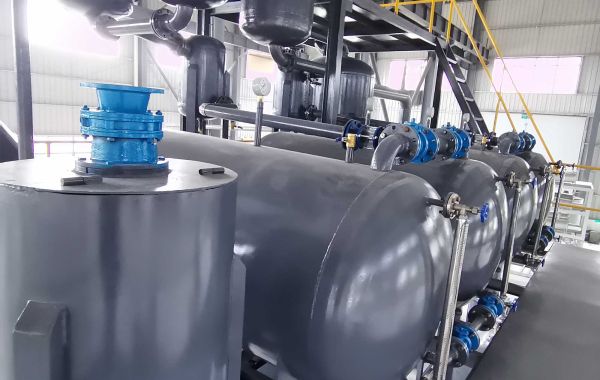Lube oil refining is a complex process that transforms crude oil into high-quality lubricants used in engines, industrial machinery, and other applications. One of the most critical factors influencing refining efficiency and final product quality is the feedstock quality—the type and composition of the crude oil or base oil used.
Why Feedstock Quality Matters
The refining process involves several steps, including distillation, solvent refining, hydroprocessing, and dewaxing. The efficiency of these steps depends heavily on the feedstock's properties, such as:
Viscosity Index (VI): Higher VI crude oils yield lubricants with better thermal stability and performance across temperature ranges.
Sulfur and Nitrogen Content: Excessive sulfur and nitrogen can increase refining complexity, requiring more aggressive hydrotreating to meet specifications.
Paraffin and Aromatic Content: High paraffin content improves lube oil yield but requires extensive dewaxing, while excessive aromatics can reduce oxidation stability.
Metal Contaminants: Metals like nickel and vanadium can poison catalysts, reducing hydroprocessing efficiency.
Effects on Refining Efficiency
Higher Processing Costs: Poor-quality feedstock with high impurities demands additional refining steps, increasing energy consumption and operational costs.
Lower Yield: Crudes with low lube oil potential result in lower base oil output, reducing profitability.
Catalyst Deactivation: Contaminants in low-grade feedstocks shorten catalyst life, leading to frequent replacements and downtime.
Quality Variability: Inconsistent feedstock properties make it difficult to maintain uniform product quality, affecting performance specifications.
Optimizing Feedstock Selection
To maximize refining efficiency, refiners should:
Choose crudes with high lube oil potential, such as paraffinic or naphthenic base oils.
Pre-treat feedstocks to remove contaminants before refining.
Blend different crudes to balance viscosity, sulfur content, and yield.
Invest in advanced refining technologies, such as hydrocracking, to handle lower-quality feedstocks more effectively.
Conclusion
Feedstock quality plays a pivotal role in lube oil refining efficiency, affecting cost, yield, and final product performance. By selecting high-quality crudes and optimizing refining processes, manufacturers can enhance productivity, reduce waste, and produce superior lubricants that meet industry standards.
Investing in better feedstock and refining technologies is not just a cost-saving measure—it’s a strategic advantage in the competitive lube oil market.







